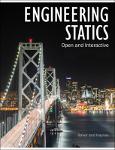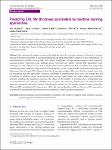Search
Author
- Osman, Ahmed I. (5)
- Daqing, Ma (3)
- Jorgensen, Ed (3)
- Li, Yan (3)
- next >
Subject
- kinh tế (26)
- Economics (12)
- programming (10)
- XRD (10)
- next >
Date issued
- 2020 - 2025 (2128)
- 2010 - 2019 (129)
- 2000 - 2009 (9)
- 1999 - 1999 (1)
Has File(s)
Search Results
This open access State-of-the-Art Survey presents the main recent scientific outcomes in the area of reversible computation, focusing on those that have emerged during COST Action IC1405 "Reversible Computation - Extending Horizons of Computing", a European research network that operated from May 2015 to April 2019.
Reversible computation is a new paradigm that extends the traditional forwards-only mode of computation with the ability to execute in reverse, so that computation can run backwards as easily and naturally as forwards. It aims to deliver novel computing devices and software, and to enhance existing systems by equipping them with reversibility. There are many potential applications of reversible computation, including languages and software tools for reliable and recov... |
Introduction to engineering mechanics: statics, for those who love to learn. Concepts include: particles and rigid body equilibrium equations, distributed loads, shear and moment diagrams, trusses, method of joints and sections, & inertia. |
An approach to digitally model the decorative elements window’s of architectural heritage—the College of Nobles, Turin—in HBIM, by applying De Luca’s method. The strategy is to transform them into mathematical ratios and parameters in order to create flexible and adaptable models that can generate variations. |
This book’s content should prepare you for subsequent classes covering Engineering Mechanics: Dynamics and Mechanics of Materials. At its core, Engineering Statics provides the tools to solve static equilibrium problems for rigid bodies. The additional topics of resolving internal loads in rigid bodies and computing area moments of inertia are also included as stepping stones for later courses. We have endeavored to write in an approachable style and provide many questions, examples, and interactives for you to engage with and learn from. |
In this work we consider solutions to stochastic partial differential equations with transport noise, which are known to converge, in a suitable scaling limit, to solution of the corresponding deterministic PDE with an additional viscosity term. Large deviations and Gaussian fluctuations underlying such scaling limit are investigated in two cases of interest: stochastic linear transport equations in dimension D≥2 and 2D Euler equations in vorticity form. In both cases, a central limit theorem with strong convergence and explicit rate is established. The proofs rely on nontrivial tools, like the solvability of transport equations with supercritical coefficients and Γ-convergence arguments. |
An important goal of immigration policy is facilitating the entry of foreign-born workers whose skills are in short supply in destination labor markets. In recent decades, information and communication technology (ICT) has fueled the demand for highly educated workers at the expense of less-educated groups. Exploiting the fact that regions in Switzerland have been differentially exposed to ICT due to their pre-ICT industrial composition, we present evidence suggesting that more exposed regions experienced stronger ICT adoption, accompanied by considerably stronger growth in relative employment and wage premia for college-educated workers. |
Non-dimensional similarity groups and analytically solvable proximity equations can be used to estimate integral fluid film parameters of elastohydrodynamically lubricated (EHL) contacts. In this contribution, we demonstrate that machine learning (ML) and artificial intelligence (AI) approaches (support vector machines, Gaussian process regressions, and artificial neural networks) can predict relevant film parameters more efficiently and with higher accuracy and flexibility compared to sophisticated EHL simulations and analytically solvable proximity equations, respectively. For this purpose, we use data from EHL simulations based upon the full-system finite element (FE) solution and a Latin hypercube sampling. |
The book focuses on the fundamental bases of software and hardware. Specific products and tools are mentioned only if they have outstanding characteristics. Again, this is in-line with the ARTIST guidelines: “It seems that fundamental bases are really difficult to acquire during continuous training if they haven’t been initially learned, and we must focus on them” [85]. As a consequence, this book goes beyond teaching embedded system design by programming micro-controllers. The book presents the fundamentals of embedded systems design, which are needed for the design of CPS and IoT systems. With this approach, we would like to make sure that the material taught would not be outdated too soon. |
For the evaluation of these regular integrals, we adopt a composite barycentre rule, which for sufficiently regular integrands exhibits second-order convergence with respect to the maximum diameter of the subsets. As an application we show how this approach, combined with a singularity-subtraction technique, can be used to accurately evaluate the singular double integrals that arise in Hausdorff-measure Galerkin boundary element methods for acoustic wave scattering by fractal screens. |
Following E. Wigner’s original vision, we prove that sampling the eigenvalue gaps within the bulk spectrum of a fixed (deformed) Wigner matrix H yields the celebrated Wigner-Dyson-Mehta universal statistics with high probability. Similarly, we prove universality for a monoparametric family of deformed Wigner matrices H+xA
with a deterministic Hermitian matrix A and a fixed Wigner matrix H, just using the randomness of a single scalar real random variable x. Both results constitute quenched versions of bulk universality that has so far only been proven in annealed sense with respect to the probability space of the matrix ensemble. |










